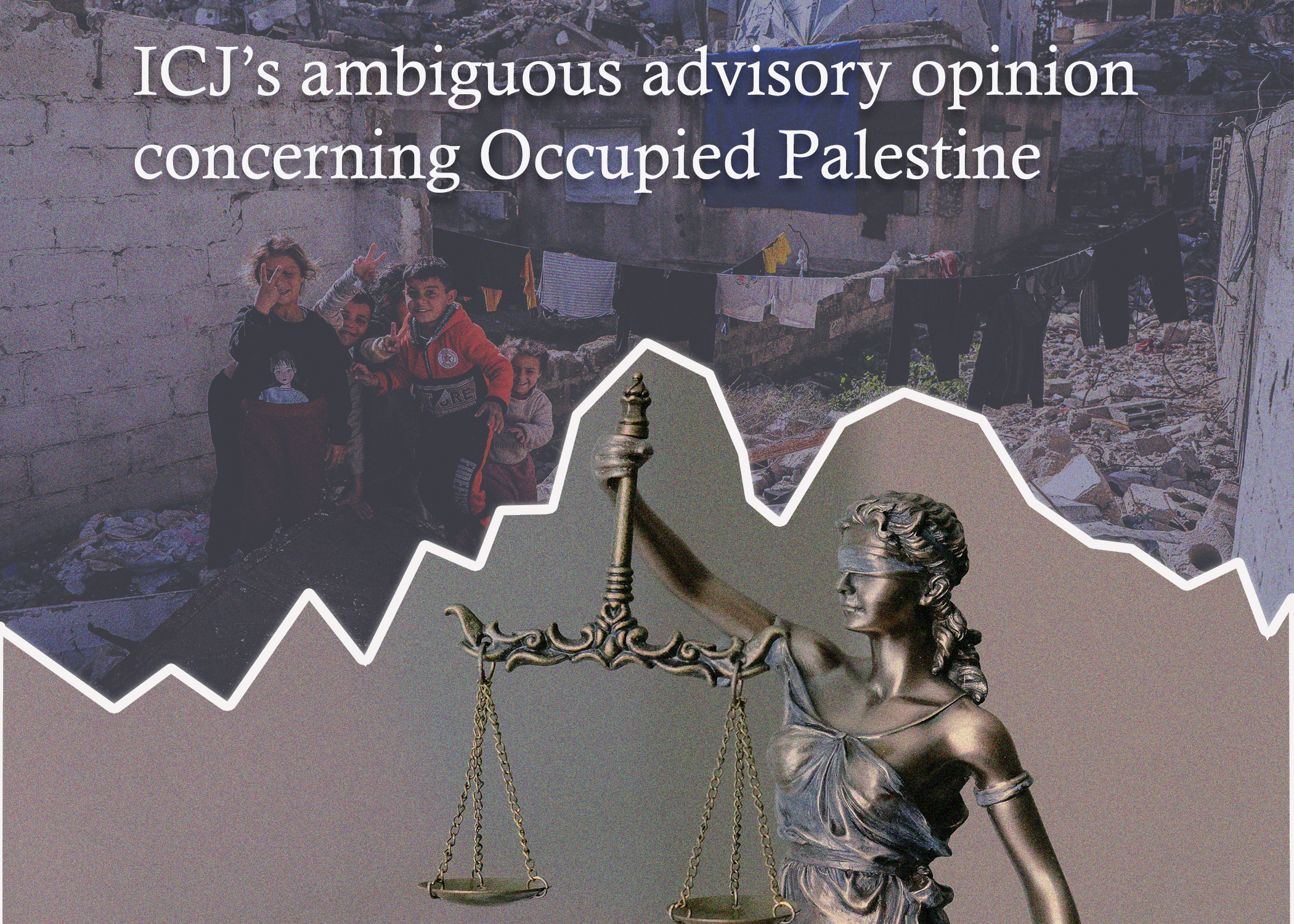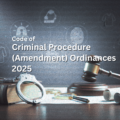The International Court of Justice gave its much anticipated advisory opinion on Legal Consequences arising from the Policies and Practices of Israel in the Occupied Palestinian Territory, including East Jerusalem, on 19 July 2024. The court has found Israel to be in violation of the law of Occupation and found the continued presence of Israel in the Occupied Palestinian Territory (OPT) to be unlawful.
On 19January 2023, under Articles 96 of the UN Charter and 65 of the Statute of the ICJ, the General Assembly submitted to the ICJ questions regarding the legality of the occupation and the violations of certain rules and norms of international law in the OPT by Israel and the consequences of such violations.
The first part of the article sets out the legal frameworks engaged by the ICJ in reaching its findings, specifically international humanitarian law (IHL), the law governing warfare conduct (jus in bello), the law regulating the use of armed force (jus ad bellum), and international human rights law (IHRL). It then gives an overview of the Court’s findings on the status of the continuous occupation of the Palestinian Territory and concludes after critically engaging with the way the court came to its decisions. The other issues raised on the AO are out of the ambit of this article.
OCCUPATION UNDER INTERNATIONAL LAW:
Occupation automatically suspends neither general international law norms, like jus ad bellum, nor IHRL norms; rather makes IHL the overarching framework under which other norms of international law function.
While some of the rights and obligations under IHL and IHRL can be mutually exclusive, some might co-exist. Protections offered by human rights treaties do not cease to exist in case of an occupation or any armed conflict.
IHL considers an occupation as a fait accompli if the factual criteria of occupation are fulfilled. It is neither legal nor illegal, merely a fact and the rules of occupation apply regardless of the legality of the occupation. Laws of occupation attempt to strike a balance between the military necessity of the occupant and the interests of the occupied populace in protecting their rights. Under customary international law as reflected in Article 42 of the Hague Regulations 1907, “territory is considered occupied when it is actually placed under the authority of the hostile army. The occupation extends only to the territory where such authority has been established and can be exercised.”
However, the initial legality of an occupation can be questioned from a jus ad bellum perspective if the occupation is a result of an unlawful use of force. The Court engages with IHL in sufficient detail to find the continued presence of Israel in the OPT unlawful. It withheld an assessment from jus ad bellum which, as discussed later in the article, seems ambiguous.
FINDINGS OF THE COURT:
Adopting the “Functional Approach” to Occupation:
The court easily found the West Bank and East Jerusalem to be occupied, adopting its previous Wall Advisory Opinion without going lengths to examine the intricacies of the armed conflict of 1967 and the resultant occupation. This approach has been criticized by some scholars and the Vice-President of the Court. However, the Court attempted to explain the Gaza situation as debates regarding whether Gaza was still occupied after the “Disengagement” of the Israeli Army and settlements from Gaza in 2005 still pervaded the legal arena.
There has been a long-standing debate in the field of law of occupation between two schools; One school professes the “boots on the ground” approach, where actual military presence, along with the effective control of the territory, is required for occupation to exist. The other “functional approach” takes into account the circumstances when, despite there being no actual military presence in the territory anymore, the foreign forces might still be in control of some elements of local administration and thereby the obligations of the occupant forces would be commensurate with the degree of control they have on the occupied territory.
In the Advisory Opinion, the ICJ has taken a step towards the functional approach in determining the status of Gaza. The court adopted the aforementioned functional approach when it stated in clear terms
“…(Where) an occupying Power, having previously established its authority in the occupied territory, later withdraws its physical presence in part or in whole, it may still bear obligations under the law of occupation to the extent that it remains capable of exercising, and continues to exercise, elements of its authority in place of the local government….(t)he Court considers that Israel remained capable of exercising, and continued to exercise, certain key elements of authority over the Gaza Strip, including control of the land, sea and air borders, restrictions on movement of people and goods, collection of import and export taxes, and military control over the buffer zone, despite the withdrawal of its military presence in 2005.” (paras 92, 93)
Israel is occupying the Palestinian Territory under international humanitarian law and the Hague Regulations 1907, which reflect customary law, and the Fourth Geneva Convention also applies in the territory. As the occupant, it is incumbent upon Israel to give the population of the OPT protection that is owed to them under customary international law and the Geneva Convention relative to the Protection of Civilian Persons in Time of War (GC IV).
The Legal Status of the Occupation:
Occupation is widely understood to be a temporary situation to respond to military necessity. The mere fact that an occupation has been prolonged (in this case, 57 years) does not itself make any occupation illegal. While assessing the legality of the occupation, it is not the length of the occupation that needs to be looked at. In order to determine whether an occupation is legal or not, the effective control of the occupied territory must be in conformity with the prohibition on the use of force, annexation, and the right to self-determination. The prolonged nature of the occupation, however, can be a frustration of the right of self-determination, turning it into de facto annexation.
The court finds that,
“…(T)he sustained abuse by Israel of its position as an occupying power, through annexation and an assertion of permanent control over the OPT and continued frustration of the right of the Palestinian people to self-determination, violates fundamental principles of international law and renders Israel’s presence in the OPT unlawful” (para 259),”
Israel’s policies of prolonged occupation and establishment of settlement amount to an illegal annexation as they aim to entrench permanent control in violation of the temporary nature of occupation. The sustained policy of annexation constitutes an ongoing and systemic violation of the Palestinian right to self-determination.
These practices, along with policies of displacement, population transfer, and economic disruptions, constitute a sustained abuse of Israel’s authority as the occupant, rendering its presence in the OPT unlawful.
DELIBERATE AMBIGUITY BY THE COURT:
The first thing any reader might notice in the AO is the use of different terminologies that are vaguer than expected. The court declares the continued presence of Israel in the OPT unlawful, not the occupation.
The initial legality of an occupation is usually judged from the perspective of jus ad bellum, the body of international law controlling the use of force and self-defense. As stated earlier, the court does not scrutinize the historical intricacies of the Israel-Palestine Conflict and also avoids any ruling on the statehood of Palestine. The court did not make much inquiry into the opposing claims of title over the territory either, on the grounds that it was an AO. An analysis from the ad bellum perspective would require the court to engage the question of the Israeli claim of self-defense, which would, in turn, require the court to say something on the statehood of Palestine. The court in the Wall AO had already ruled that self-defense does not apply in an occupied territory. Facing this conundrum, it seems that the court imports the doctrine of abuse from administrative law to reach this conclusion.
The factual findings of annexation are undisputed. This AO, much like the Wall AO, makes a legally questionable analysis; that of making the prohibition on acquisition of territory by force being corollary to the prohibition on use of force, as the prohibition of annexation or acquisition of territory even after lawful use of force, i.e., in self-defense, is an emerging norm in international law.The prohibition of the acquisition of territory is emerging as a standalone norm in international law. The ICJ repeatedly tethering this prohibition with Article 2(4) of the Charter is diminishing the potential of the norm and makes it seem as if the force used is lawful (in self-defense), the subsequent acquisition or annexation may be legal.
The primary element of annexation is the intention to entrench permanent control. But what happens, hypothetically, when force is used in self-defense and a territory is occupied, but later the occupying forces establish permanent control? In this scenario, the prohibition on the use of force is not violated, but there is an annexation. The issue of how there is no violation of the primary prohibition but a violation of the corollary one is not addressed by the court. Another fault with this analysis is that some of the policies and practices of Israel in the OPT cannot be termed as the use of force in line with the decision and interpretation of the court in previous cases, Nicaragua, and DRC. The court should have taken this chance to do away with the subject of the prohibition of annexation from the prohibition on the use of force.
The court, rather than saying Gaza is occupied, says Israel’s obligations in the Gaza Strip are commensurate with the degree of its effective control. This formulation is actually commendable as the functional approach provides more nuance in the OPT than any binary yes-or-no system.
The primary remedy, the obligation of Israel to withdraw from the OPT, has not been made subject to the “immediate, total and unconditional” format proposed by Palestine; rather, the terminology of “as rapidly as possible” has been used. While this approach can be lauded for being more realistic in the sense that the mess that is the occupation cannot be solved immediately, this formulation basically does nothing much to solve the crisis. All the dissenting judges have, on the other hand, criticized the remedies in favor of the UN Security Council Resolution 242 that emphasizes a negotiated solution to the crisis.
CONCLUSION:
The ICJ mostly expanded on its 2004 Wall Advisory Opinion regarding the matters of occupation, providing limited help for the Palestinian cause. Moreover, an AO by its nature is not binding. The opinion given in context preceded the October 7th escalations, containing no definitive answers. And the fact of a Knesset resolution passed just one day prior to the pronouncement of the AO categorically rejecting any two-state solution to the crisis, further frustrates the whole situation.
However, the General Assembly did endorse the opinion reaffirming Israel’s obligation to end its “unlawful presence” by September 2025; a deadline already passed. The Advisory Opinion, with strong ongoing public opinion on the Israel-Palestine conflict, has galvanized strong diplomatic actions during the ongoing 80th Session of the UNGA.













No Comments
Leave a comment Cancel